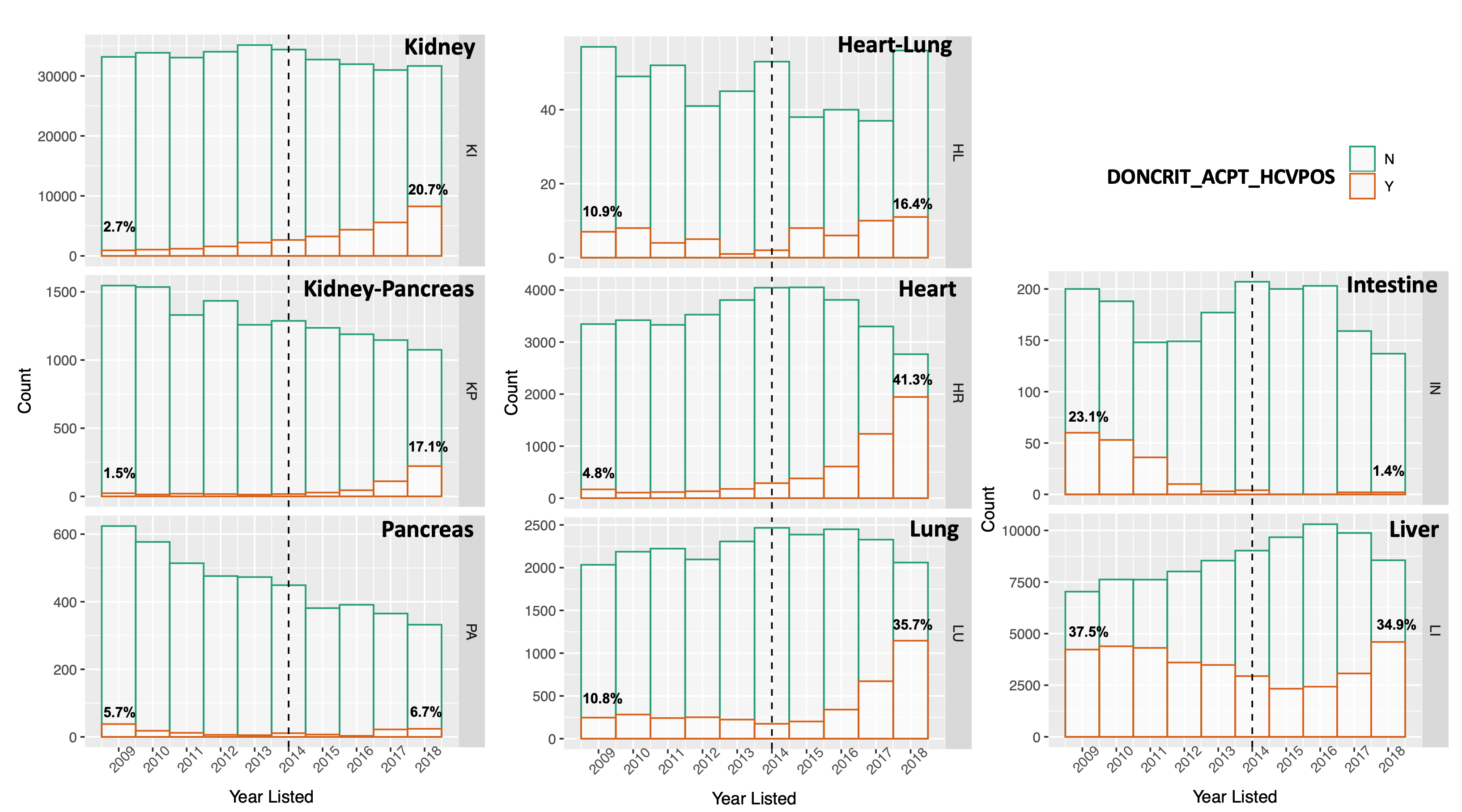You Need a Transplant, How about a Hepatitis C Infected Organ?
*Qing Yuan1,2,3, *Shanjuan Hong1, *Eve Roth1,3, *Meghan Sise1,3, *Emily Bethea1,3, *Winfred Williams1,3, *Heidi Yeh1,3, Nahel Elias1,3
1Massachusetts General Hospital, Boston, MA; 28th Medical Center, Chinese PLA General Hospital, Beijing, China 3Harvard Medical School, Boston, MA
Objective: To investigate change in transplant centers’ and candidates’ willingness to accept hepatitis C virus (HCV) infected deceased donor organs.
Design: Retrospective cohort study from the Organ Procurement and Transplantation Network (OPTN) on June 2019.
Setting: National database of all transplant programs in the US.
Patients: Adult (≥18) transplant candidates listed for kidney(KI), kidney-pancreas (KP), pancreas (PA), heart (HR), lung (LU), heart-lung (HL), liver (LI), and intestine (IN) between 2009 and 2018.
Main Outcome Measures: The percent candidates listed as accepting HCV+ organ. The HCV+ acceptance likelihood among listed candidates before and after Direct Acting Antivirals (DAA) became available in 2014, and adjusted for candidate age, gender, ethnicity, insurance, organ failure diagnosis, comorbidity and wait times.
Results: Over the study period, 8.6% KI, 3.8% KP, 3.1% PA, 12.7% HR, 14.3% LU, 11.7% HL, 29.1% LI, and 8.8% IN candidates were listed as accepting HCV+ organs. From 2009 to 2018, HCV+ organ acceptance increased for KI, KP, HR, LU, HL; remained stable in PA and LI; and decreased for IN (Figure). On multivariable analysis, compared to pre-DAA era, willingness to accept HCV+ organs for KI candidates in the post-DAA era was 3.62 times higher (aOR 3.523.623.72), 5.75 for KP (4.545.757.28), 6.05 for HR (5.576.056.57), and 1.88 for LU (1.751.882.03). The likelihood for accepting an HCV+ PA (0.781.091.54), and HL (0.961.733.1), did not change, whereas it was lower for LI (0.730.750.77), and IN (0.020.040.09).
Conclusions: Further analysis, and centers’ and patients’ education are needed to maximize organ utilization thus expanding the donor pool. 
Back to 2020 Posters
